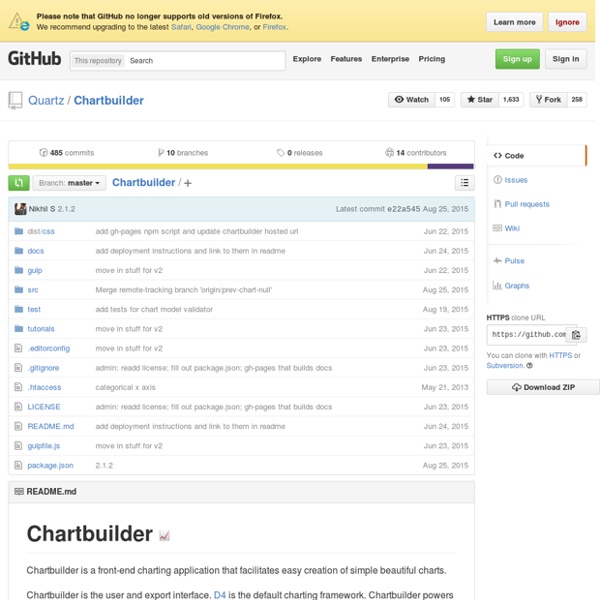



HelpMeViz - Helping people with everyday data visualizations Venngage Datavisualization.ch Selected Tools Visage What I Learned Recreating One Chart Using 24 Tools Back in May of this year, I set myself a challenge: I wanted to try as many applications and libraries and programming languages in the field of data visualization as possible. To compare these tools on a level playing field, I recreated the same scatterplot (also called a bubble chart) with all of them. Based on the results, I published two listicles: One for data vis applications and one for data vis libraries and programming languages. An overview of all the tools I tried can be found in this Google Spreadsheet. Full disclosure: My experiment was highly influenced by the tools I already knew before I started trying new ones. Here’s a GIF of me recreating the same chart with 12 different apps: And here’s a picture of all the different outcomes of the charting libraries: Let’s start! There Are No Perfect Tools, Just Good Tools for People with Certain Goals Data visualization is a communication form used by many subfields, e.g. science, business and of course journalism. Analysis vs.
Information Is Beautiful Awards 2014 - The Results Are In Last night’s third annual Information is Beautiful Awards celebrated dataviz at its most dazzling. Hundreds of entries were trimmed to a razor-sharp pack of outstandingly illuminating infographics, over which our judges deliberated long and hard. Now, with thanks to our generous sponsors Kantar, we present the winners. Data Visualization Gold - Rappers, Sorted by Size of Vocabulary by Matthew Daniels Silver - Weather Radials Poster by Timm Kekeritz Bronze - The Depth of the Problem by The Washington Post Special mention - The Analytical Tourism Map of Piedmont by Marco Bernardi, Federica Fragapane and Francesco Majno Infographic Gold - Creative Routines by RJ Andrews Silver - Game of Thrones Decoded by Heather Jones Bronze - The Graphic Continuum by Jonathan Schwabish and Severino Ribecca Interactive Gold - The Refugee Project by Hyperakt and Ekene Ijeoma Silver - How Americans Die by Bloomberg Visual Data Joint Bronze - Commonwealth War Dead: First World War Visualised by James Offer Website Tool
20+ Tools to Create Your Own Infographics A picture is worth a thousand words – based on this, infographics would carry hundreds of thousands of words, yet if you let a reader choose between a full-length 1000-word article and an infographic that needs a few scroll-downs, they’d probably prefer absorbing information straight from the infographic. What’s not to like? Colored charts and illustrations deliver connections better than tables and figures and as users spend time looking back and forth the full infographic, they stay on the site longer. While not everyone can make infographics from scratch, there are tools available on the Web that will help you create your very own infographics. Read Also: The Infographic Revolution: Where Do We Go From Here? What About Me? “What About Me?” Vizualize.me Vizualize.me allows you to create an online resume format that is beautiful, relevant and fun, all with just one click. Piktochart easel.ly Visual.ly Infogr.am Many Eyes Venngage iCharts Dipity Timeline JS StatSilk InFoto Free Photo Stats More Tools
Online Diagramming and Flowcharting Tool